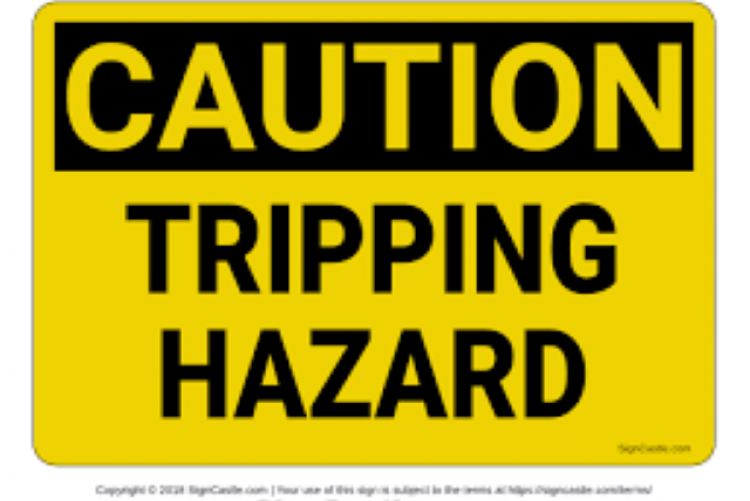A hazard is an agent which has the potential to cause harm to a vulnerable target. Workplace hazards are any aspects of work that cause health and safety risks and have the potential to harm.
Trailing power cords, loose or frayed carpets and rugs, spills etc, all these can cause a sleep, a trip, or a fall in the workplace and result in physical and mental impacts on an injured employee.
Frayed and faulty cords, wiring or cables can pause a risk of electric shock, burns and fires. Exposure to live electricity can also result in a fall from height
Electric socket overloading can lead to explosion which may cause fire outbreak.
Unguarded machinery running machinery parts pose a safety hazard if employees accidentally come into contact with them, they may sustain serious injuries and fatalities.
Fires: Every workplace is at risk of fire, it does not matter how small the fire starts what matters is the availability of the fuel [wood, papers, cooking oil, liquefied gas etc] to support combustion. Some workplaces are at increased risks due to the work activities. Fire can be devastating both to the organization and to the people affected. It can cause serious injuries such burns, asphyxiation and fatalities.
Psychosocial: Psychosocial hazards are those that can have an undesirable effect on an employee’s mental health or well being, for example, sexual harassment, victimization, stress and workplace violence.
Chemical: Chemical hazards are hazardous substances that can cause harm. These result in both health and physical impacts, such as skin irritation, respiratory system irritation, blindness, corrosion and explosion. For example, working in the labs without proper personal protective equipment [PPE] exposes one to chemical inhalation as well as skin/eye irritation, using cleaning chemicals inappropriately may also harm the user
Physical: Physical hazards are environmental factors that can harm an employee without necessarily touching them, such noise, radiation and pressure.
Ergonomic: Ergonomic hazards are a result of physical factors that can result in musculoskeletal injuries. For example, a poor workstation setup in an office, poor posture and manual handling.
Working in confined spaces, can be especially dangerous because of reduced oxygen levels and potential build up of gases which can result in loss of consciousness. Examples of people at risk include those working in cold storage facilities, air ducts and man holes.
Exposure to contaminated sharps such as needles and blades can cause blood borne diseases. Those at risks from blood borne diseases are those working in health care sectors, cleaners, waste and refuse collectors.
Leaving office taps when water is running may cause flooding in the office leading to damage of office equipment.
Mitigation measures
- Always turn off water taps when not in use.
- Do not overload electric sockets.
- Always wear PPE when working in hazardous environment e.g laboratories.
- Spills should be cleared immediately.
- Put a warning sign on slippery floor to warn users.
- Running machinery should always be manned.
- Separate sharps from other refuse.
- Sensitizing personnel on equipment use/ operation.
- Proper disposal of refuse.
- Always dispose cigarettes butt appropriately.
- Observe all hazard warning signs.
- Log in to post comments

